
50 years of tourism in the Maldives and, remarkably, it’s still the ‘ultimate island paradise’ early visitors found
- An early visitor found the Indian Ocean islands laid back and waxed lyrical about the low cost of living, happy and devout people, and lack of visa requirements
- Only when the Hilton arrived in 1997 did other international brands begin claiming islands for their own resorts, which continue to proliferate today
“Does it really exist?” asked Dirk Brink – a “well-known local money trader and inveterate traveller” – in the pages of the South China Morning Post in March 1976. “Is there really a country which belongs to the ‘Brotherhood of enemies’ (United Nations) which has all the qualifications of paradise?”
Brink had, a headline teased, “finally found the ultimate island paradise for the jaded jet-setter looking for a place to lie down”. And he was going to tell readers all about it.
This fantastical place was “A country where there is no income tax, no death duties, no exchange control, no visa requirements, no thieves, no murderers, no poverty, no contaminated water, no air pollution and practically no cars.
“A country populated by devoutly religious people, happy, content and smiling people.
‘No’: why travellers should think twice before visiting Thailand in 2023
“A country where anybody can afford to stay because the cost of living is very, very low and the simple way of life contributes to a long life.
“A country where the most expensive hotel charges US$15 (about HK$75) a day, which includes three square meals.

“Yes, this country exists,” promised Brink, “and it is called the Republic of the Maldives.”
So novel were the Maldives in 1976, the breathless Brink added, for the benefit of his readers, “ … (pronounced: Maldeeves)”.
The Maldeeves and its countless fushis may now attract more than 1.5 million tourists annually but when our Mr Brink discovered the nation of almost 1,200 islands, its first resort had been in business for just three-and-a-half years.

In October 1972, the Kurumba Village Resort was opened by an enterprising Italian travel agent called George Corbin on the former coconut plantation island of Vihamanaafushi. Its basic rooms – 30, in blocks of three, with coral stone walls, coconut timber and palm thatch roofs, and showers that sprayed brackish water – were reportedly booked solid for the rest of the year.
Now known simply as Kurumba Maldives (book a room at the Kurumba Village Resort online and you’ll need a ticket for Coimbatore airport, in India’s Tamil Nadu state, rather than to the Maldives), the 180-room property is still going strong, although being just a 10-minute boat ride from busy Malé airport, the management can no longer boast of being remote.
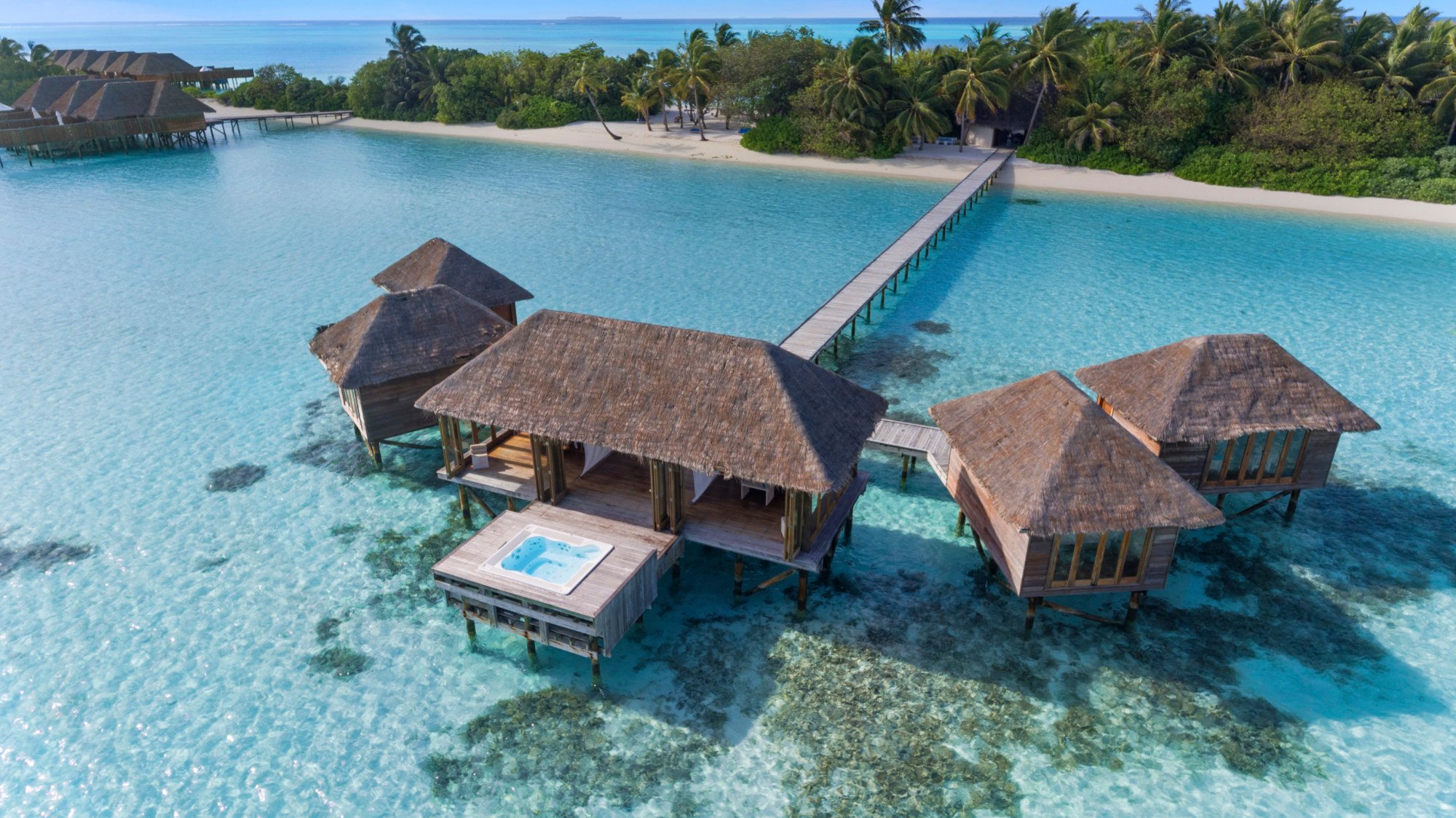
With the business model set – one island/one resort (most likely with some overwater bungalows) reached by speedboat but preferably by seaplane – the proliferation continues.
Between 2018 and 2021 nearly 50 new resorts opened, according to Travel + Leisure magazine. “And that growth rate is now considered fairly typical in the Maldives; 11 new resorts came online in 2016, followed by approximately 15 new properties in 2017.” Most counts put the current number of island resorts in the Maldives at more than 160.
And in some ways, given the geography of the nation – 1,192 coral islands spread over 90,000 sq km (35,000 square miles) of ocean – some of that splendid isolation that so bewitched Brink almost half a century ago can still be found, albeit with the kind of luxurious mod cons the jet-setter of the ’70s could only dream about.
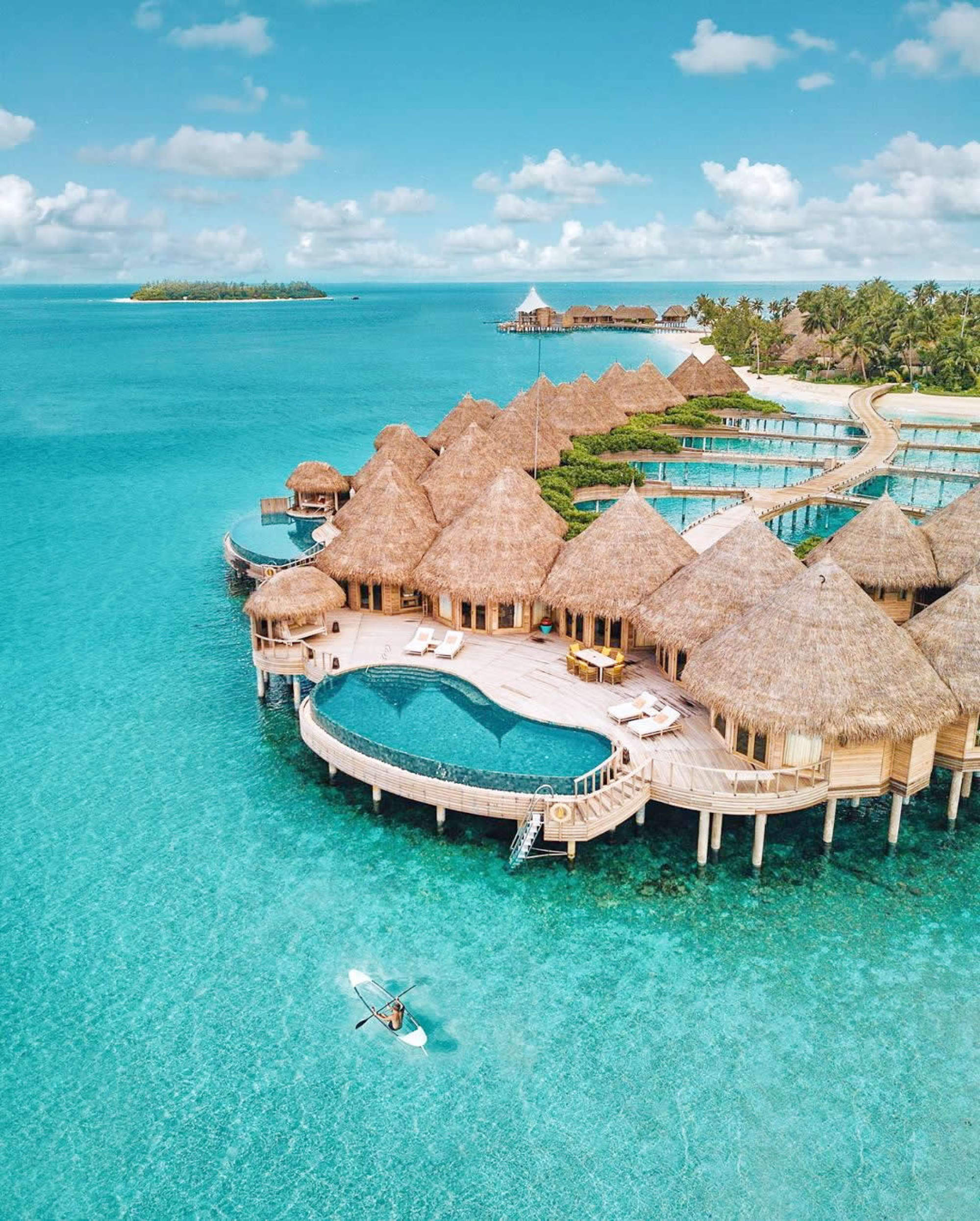
Funnily enough, when our intrepid traveller visited in 1976, the health of the arriving passenger was, as in the Covid-19 era, the most important consideration: “Upon arriving at the airport on Hulhule Island, there is only one person, a medical officer, who is interested only in making sure that the traveller is healthy.
“No visas are required and as a matter of fact, nobody asks about passports. When I asked for a stamp in my passport to prove that I had been to the Maldives, I was told that they did not have such a stamp.”
He didn’t have much of a choice, but Brink concluded that, “The best hotel island is Bandos, but they cater mainly for elderly people who like things very quiet. The more popular hotel is […] the Kurumba Village Hotel. This hotel is always full and there is dancing on the weekends.
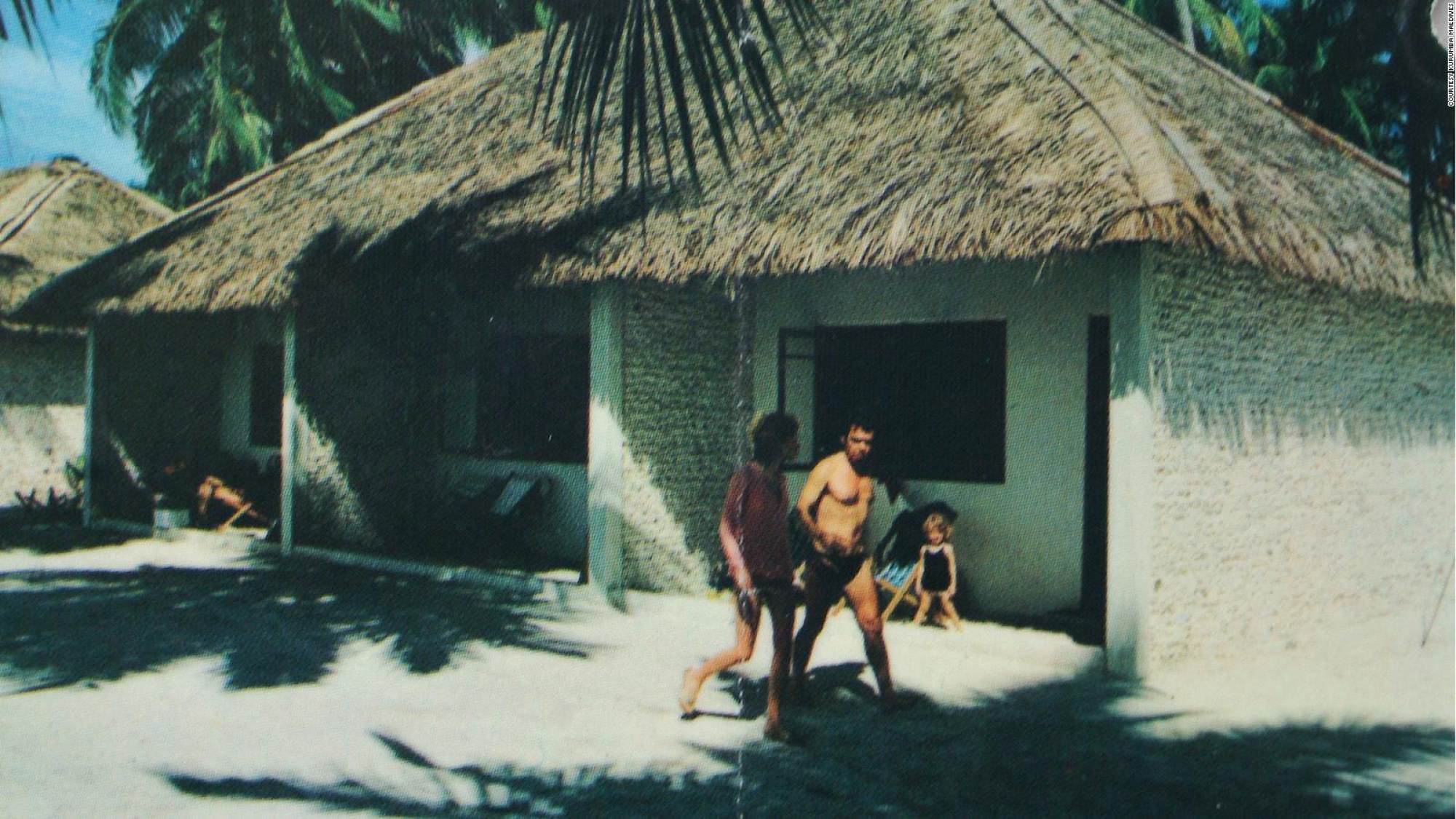
“The cost of spending a night in Bandos is US$15 per day, including three square meals and Kurumba Village costs US$14. The cost is figured at two people occupying one room and if one person wishes to occupy a room by himself, he will have to pay double the amount.
“The only communication with the outside world – for the time being – is by airmail or by cable.”
When Brink visited, tourists had to fly into the Maldives from Colombo, Sri Lanka. “However, the Ceylonese authorities impose a penalty of seven days in an hotel in Colombo if one arrives by charter flight. One can easily go out the next day, but the seven hotel days have to be paid.”
Commenting on the future of tourism in the Maldives, Brink wrote: “When anyone wishes to build an hotel, he will be able to lease an island but only half of that island can be developed, as the other half must be preserved in its natural state, which makes it quite charming and romantic.
“The Maldivians are aware that eventually imported corruption will be unavoidable,” wrote Brink, and here he quoted one of the hotel managers he encountered: “In that case, we pick up our belongings and move to another island. As there are 2,000 islands, we will have at least 5,000 years before the entire republic is spoiled.”
Five thousand years! Oh, the optimism!
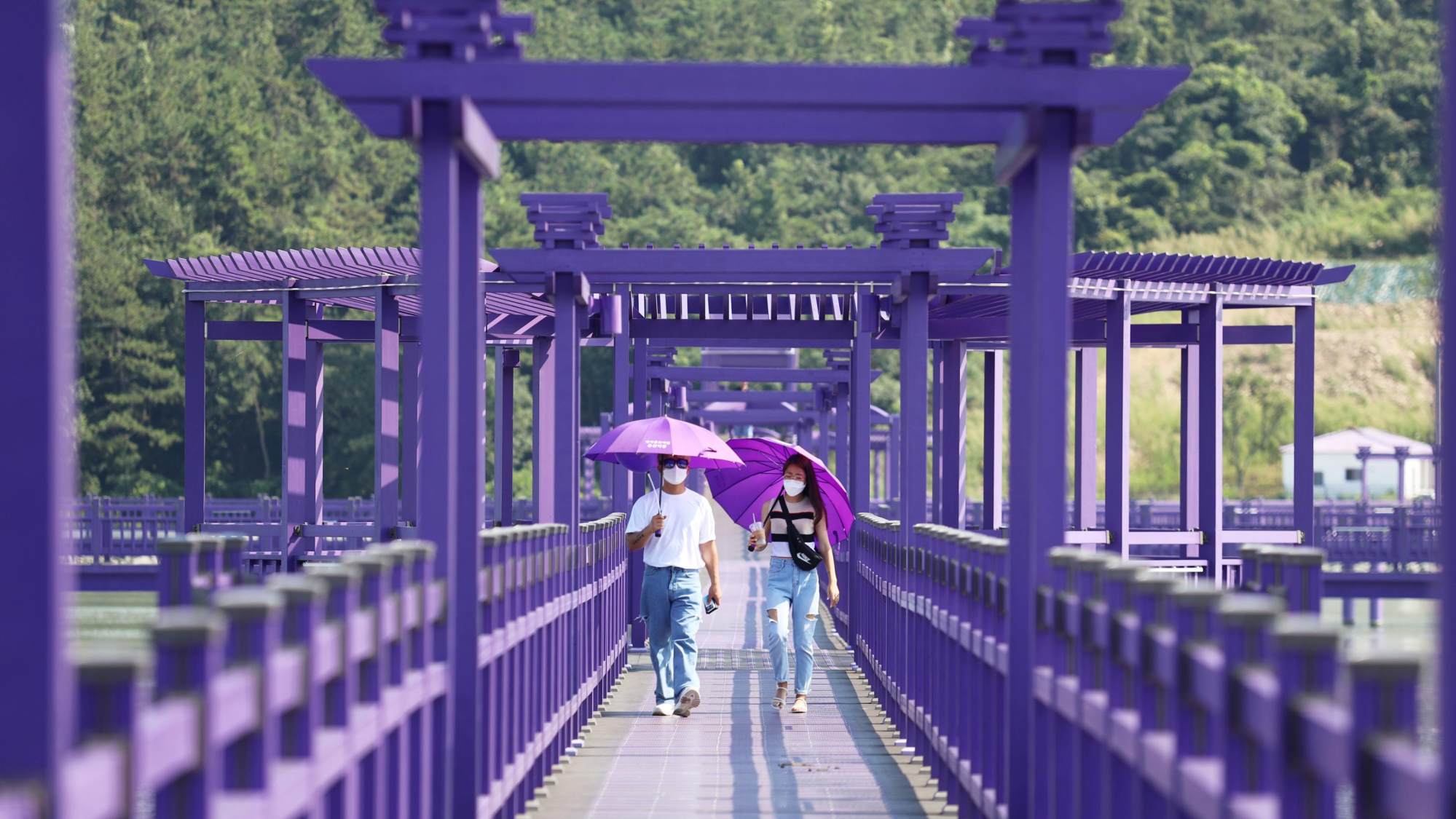
Purple patch
With almost as many islands as the Maldives but not nearly as well known, Shinan county is the venue for the Global Islands Cultural Diversity Forum 2022 this week.
Shinan, a place of 1,004 islands in southwestern South Korea, is playing host to some 30 experts in island culture, who will discuss cultural diversity, sustainable tourism and the challenges presented by climate breakdown.
The (purple) jewel in Shinan’s crown is perhaps Banwol Island, which was selected by the World Tourism Organization as one of its Best Tourism Villages in 2021.
The Korea Times explains, “The island is known as the Purple Island because its residents painted their houses and other facilities purple, inspired by their native balloon flower, or doraji in Korean.”
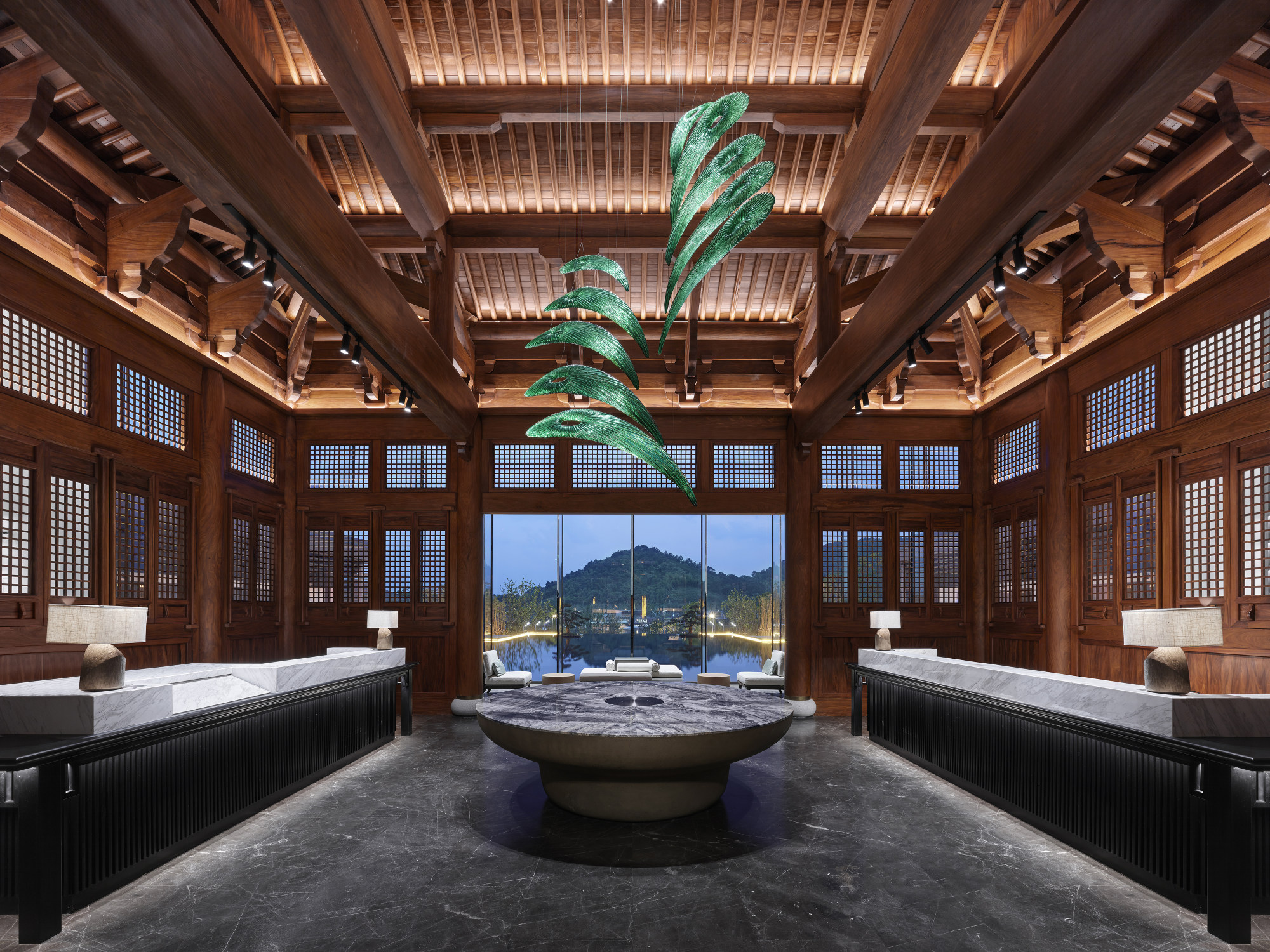
Paper trails
Destinations Known can’t pretend to comprehend many of the subtle differences that define the ever-growing number of sub-brands hotel chains choose to unleash on the world, but we do know a worthy USP when we see one.
The Singapore-based Banyan Tree Group’s Homm brand is, according to the honchos, “ideal for families, couples and business executives” – which doesn’t narrow it down much. But each of the properties “advocates for a different endangered species, centrally displayed in lobby areas via origami art”, which sounds like a good thing.
The first Homm hotel, in Phuket, Thailand – which opened at the beginning of the year – has an origami interpretation of a black-billed gull displayed in the lobby. And at the recently opened Homm Sukhumvit34, in Bangkok, Thailand, and Homm Huzhou Xisai Shan, in Huzhou, China, are paper representations of an Asian elephant and a crane (the bird, not the construction machinery), respectively.
The upcoming Homm hotel in Bali will have a jalak Bali bird, and we can’t wait to find out which animal will be depicted at the new Luang Prabang property.

